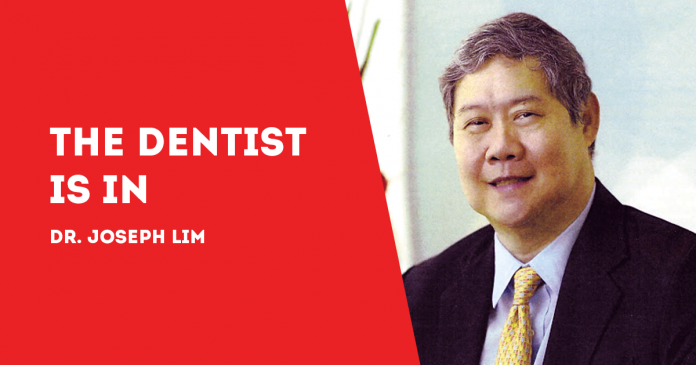
(By Dr. Joseph D. Lim and Dr. Kenneth Lester Lim, BS-MMG, DDM, MSc-OI)
HERE’S the future: microchips that mimic parts of the human body.
“Organs-on-chips” are made of plastic with grooves that are lined with cells and channels that transport air and fluids. They simulate aspects organ structure and function and many different parts of the body, including beating heart tissue, air-filtering lung cells, and electrically active brain cells.
Or even teeth. But that’s getting ahead of the story.
What is good about organs-on-chips is that they can lead personalized medicine, or health care that is tailored to fit the particular needs of a particular patient. Organ-on-chips may reduce if not eliminate the need for animal experiments.
Research supported by the National Institute of Dental and Craniofacial Research is using a mouths-on-chips to find better ways to treat oral diseases.
Several American universities are already doing this, such as the tooth-on-a-chip studies at Oregon Health & Science University (OHSU). Researchers at the University of Rochester are also looking at salivary gland chip development.
And there’s more: scientists are testing dental materials, repurposing drugs for salivary gland dysfunction, and peering into the inner workings of the oral cavity. All using organ-on-chip technology.
The advantage of organ-on-chips, also known as tissue chips, is that they mimic living systems and cultured cells that may grow three-dimensionally and appear like-like. That is, compared to animal and cell experiments in a petri dish culture which are two-dimensional and may not always reflect real-life conditions.
“In a way, we are putting a window on the tissue, and we can watch how it responds,” says Dr. Luiz Bertassoni, a dentist who teaches at the Oregon Health & Science University, Luiz Bertassoni and his research team have developed a miniature tooth system to understand how microbes and biomaterials such as dental fillings interact with teeth, teeth tissue and the oral microbiome.
Dr. Bertassoni’s chip the size of a postage stamp consists of a thin slice of a human molar sandwiched between two chambers.
One chamber represents the interior of the tooth: it contains dental pulp which is made up of cells that keep the tooth vital. The other chamber mimics the outside of the tooth, where it comes into contact with oral bacteria and dental materials.
His work is important because scientists have not fully understood how the cells inside a real human tooth react. The tooth-on-a-chip allows Bertassoni’s team set out to fill that gap in a 2020 study published in the journal Lab on a Chip.
His research team applied an acid, primer, and adhesive – materials used for standard tooth restorations, such as fixing dental caries and chipped teeth – on the tooth-on-a-chip.
Using a microscope, they were able to look at the pulp respond in real time to the materials applied to the tooth slice. A day after the application, they were able to observe changes in the shape and structure of the pulp and cells.
The researchers found evidence that the restoration materials were able to reach, damage, and even kill pulp cells by permeating through tiny tube-like structures in the tooth slice. This is potentially a damaging process.
“Some of these treatments are done millions of times in a single day across the globe, and I didn’t expect the effect on the cells would be so noticeable,” says Dr. Bertassoni.
I n a study published the following year in the Journal of Dental Research, Dr. Bertassoni showed that applying different restorative materials with biologically active properties promoted pulp cell growth and stopped tooth decay-causing bacteria on the tooth chip.
The studies demonstrated how organ-on-a-chip technology generates insights into how dental materials affect tooth genetics and health.
Dr. Bertassoni sees a time when the chip could help lead to the development of less-damaging dental materials and open doors to personalized dentistry. By then, dentists design a chip for each patient to tailor-fit individual needs.
***
Dr. Joseph D. Lim is the former Associate Dean of the College of Dentistry, University of the East; former Dean, College of Dentistry, National University; Past President and Honorary Fellow of the Asian Oral Implant Academy; Honorary Fellow of the Japan College of Oral Implantologists; and Honorary Life Member of the Thai Association of Dental Implantology. For questions on dental health, e-mail jdlim2008@gmail.com or text 0917-8591515.
***
Dr. Kenneth Lester Lim, BS-MMG, DDM, MSc-OI, graduated Doctor of Dental Medicine, University of the Philippines College of Dentistry, Manila, 2011; Bachelor of Science in Marketing Management, De la Salle University, Manila, 2002; and Master of Science (MSc.) in Oral Implantology, Goethe University, Frankfurt, Germany, 2019. He is an Associate professor; Fellow, International Congress of Oral Implantologists; Member, American Academy of Implant Dentistry and Philippine College of Oral Implantologists. For questions on dental health, e-mail limdentalcenter@gmail.com/PN

